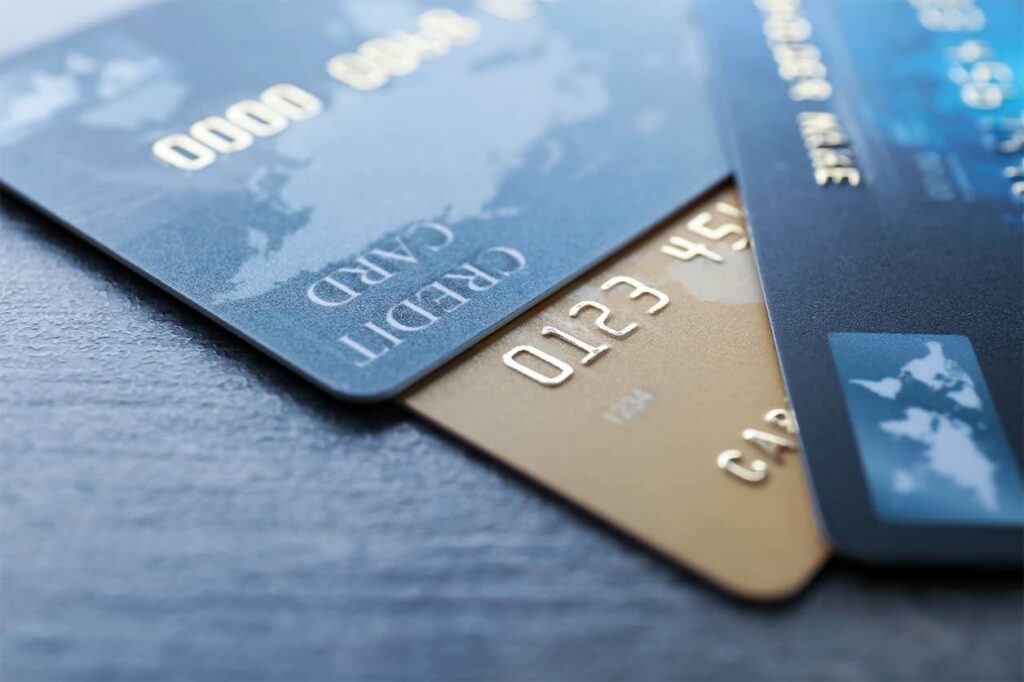
The end of the month has arrived; weeks of workdays are behind you, and your paycheck has been deposited in the bank. You check your account while dreams of future purchases flash through your head. Electronics, vacations, new furniture or appliances — you want it all.
To make that spending dreams a reality, you need to watch your budget and save up. But how do you do that when you have bills to pay? Don’t worry if it sounds unrealistic. There are ways to save without scrimping. Here are six tactics to make your savings goals a reality.
1. Use a Debit Card as Your Primary Card

There’s no doubt that controlled credit card use and paying off your balance will improve your financial reputation. Still, it can be difficult to keep your spending under control without consistently monitoring both your credit and bank accounts. Instead of reaching for a credit card as your primary means of purchase, use your debit card instead.
This way, when you’re out and about, you’ll only be able to freely spend money you already have. You can still use your credit card to build credit. But a debit card helps you keep an eye on spending because it only takes money from your bank account.
So, you will have to be more aware of the money you have available. Many cards also have added benefits. For example, you can find a debit card like Chime that rounds up purchases and saves money automatically. Your savings will build quickly and you don’t have to put in as much effort to make it happen.
2. Set Up a Budget With Automatic Transfers
Saving is also easier when you have an idea of necessary expenses in advance. All you need to do is refer to your past monthly spending to allocate certain amounts for each necessity. Then, each month, set up an automatic bank transfer to pay your bills. You’ll be able to have the rest to spend however you please or add to your savings if you wish.
The amount you transfer into savings should be a consistent percentage (say, 30%-50% of the extra, for example) of your paycheck each month. This way, as your income grows, so will the amount in that percentage. This can help you save more money faster.
If your automatic transfers occur right after you receive your paychecks, then you won’t have to worry about overspending. This is a simple, hands-off way to build responsible spending habits.
3. Limit and Match Nonessential Purchases

We all have our vices — coffee, sweets, clothing, and other such miscellaneous expenses often end up dominating our weekly spending. It can be difficult to give them up, but you might find success in limiting your purchase of them. If you find yourself buying dessert every night, commit to only doing so twice a week.
Consider making these purchases if you can match their costs by putting an equal amount in savings. Matching refers to the practice of only spending money if you can afford to spend double the necessary amount. If you can, then make the purchase and put the same amount you spent (including tax/tip) into savings.
Now, when the impulse strikes again, you can guide yourself. If you are buying a $6 coffee, are you able to spend $12 total by matching the cost and earmarking it for savings? If so, you can then make your choice with confidence.
4. Create a Meal-Prep Procedure
After a long workday, you may not want to spend your time cooking dinner when you can order in. Not only is making your own food healthier, but it can also cut down on unnecessary spending.
Each week, plan a grocery list based on your needs. Find recipes that are cheap, healthy, and simple to prepare. If time allows, research which stores might provide the cheapest options for the best value.
Once you’ve done this and purchased your ingredients, you are set for the week! You can maximize your grocery budget by choosing meals that can serve you for several days. For example, a simple spaghetti dish can last a few nights and will likely cost less than $5 total.
You won’t have to make dinner every night, but you’ll have healthy options readily available. Meal planning at a larger scale will help you save even more money and time in the long run.
5. Practice Mindful Shopping

While fast-fashion clothing brands offer cheap prices and attractive styles, their pieces tend to age quickly due to low quality. You won’t be saving money in the long run due to the need to consistently replace them. Other stores may have slightly higher prices, but higher-quality pieces will look better and save you more over time.
You can find this middle-ground at places like thrift stores and outlets, which often have higher-value items for reduced prices. This also applies to most other products depending on their value. You can shop for other items as discount retailers to save a few pennies.
For example, off-price retailers like TJ Maxx also sell home goods. Many of the items you might need can be found used, gently used, or in similar overstock outlet stores. Buying and selling sites like eBay are also good places to look for deals. The seller may not need the item anymore and will sell it for a lower price than they originally paid.
6. Concentrate Your Media Consumption
These days, there are so many entertainment options to choose from, including cable, satellite, and streaming. If you want content from multiple services, the monthly payments can become astronomical with the hidden fees included. Instead of subscribing to cable, for example, you can heavily reduce your monthly bill by switching to streaming.
Most content can ultimately be found online in the long run and you won’t have to pay cable fees. To take this even further, you can look at ways to spend less on streaming itself. If you want to watch multiple Netflix shows, try subscribing only for the duration of the seasons you want to watch. This way, you’ll only be paying for one service but still consuming the same amount of content.
Once you’re done with Netflix, you can cycle through other services in the same way. With a clearer idea of how to conveniently save, you’re already on the road to better financial health. These tactics can yield results in days and free up your wallet for those big-ticket items on your wishlist.













